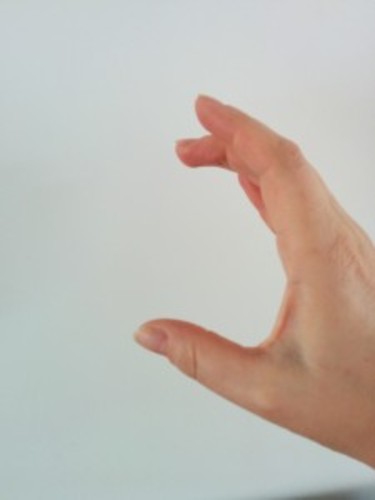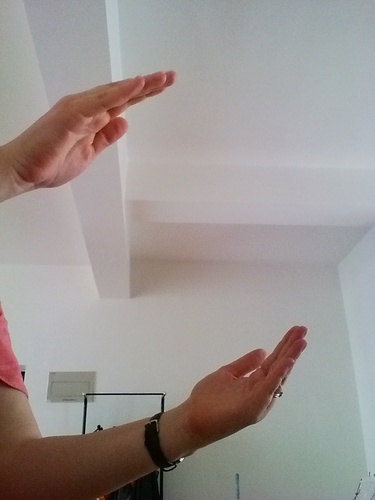Years ago, I was having a conversation with my Malaysian friend, and we started talking about how Malaysia has a lot of British influence. “We drive on the right like they do,” my friend explained.
“Wait, what?” I thought I had heard her wrong, or that she had misspoken. “You mean you drive on the left like they do.”
“No, we drive on the right in Malaysia. What about in the U.S.?”
“Um,” I was still confused, but answered her. “We drive on the right, like here in China.”
“Wait, what?” Now she was confused. “They don’t drive on the right in China.” We quickly figured out the problem. I was talking about which side of the road the car drives on; she was talking about which side of the car the driver sits in to drive. Therefore, we were both right; when you insert the appropriate hidden assumption, it makes a lot more sense. In the U.S. we drive on the right (side of the road) and we drive on the left (side of the car).
This is not the first time something like this has happened.
It’s amazing the amount of implicit cultural assumptions we carry around in our noggins, and that sort of thing is liable to trip a person up when dealing cross-culturally.
Just a few weeks ago, I was asking my house helper to buy potatoes at the market. “What size do you want?” she asked. I responded like this to show her:

“About this big.”
She laughed with eyes wide in surprise. “Oh, they don’t have them that big!”
“Oh,” I muttered, confused because I had seen potatoes that size for sale just about everywhere. “Okay, well, then just get the biggest ones they have.”
When she came back with the exact size I had originally wanted, a bell went off in my head. She’s talking about width, but I was talking about length.
I was sure this was the right explanation, because several years ago, I had had a similar experience talking to a Chinese friend. I was trying to learn the names of fish that are commonly sold here, so I was describing one kind.
“It’s about this big,” I started, indicating the size with my hands, like this:

I didn’t get further in my explanation, because that friend also gave a startled laugh. “Oh, no, no, I don’t think they sell fish that big!” I knew something was fishy (ha ha ha) because I had just seen carp that size swimming around in tubs at the market down the street. We talked a little more, and I eventually realized that while I understood my gesture to mean the length of the fish, head to tail, she assumed I was showing her its girth. Aha. Yeah, I’d need to shop at SeaWorld for something that hefty.
These tomayto/tomahto differences aren’t in any textbook, and it seems like you just have to stumble upon them to even know they exist. However, once you’ve learned them, it makes things go a whole lot more smoothly.
For example, I’ll never forget when I finally figured out how to properly state someone’s age in China. For a long time, I would get into these weird conversational loops with neighbors or strangers. They’d go something like this:
Chinese mom out playing with her young son: How old is your daughter?
It’s vital to know this, by the way. The most common/polite way for the son to greet my daughter is to either call her jie jie (‘older sister’) or mei mei (‘younger sister’), so if the children are too close in age to guess correctly who is older, this question is going to be asked.
Me: She’s four. [Thinking this is true because she is still a couple months away from her fifth birthday.]
Chinese mom: Oh, then she’s his mei mei. [Tells son to greet my daughter as mei mei, which he does.]
Me: How old is your son? Five?
Chinese mom: Yes, five. When was your daughter born?
Me: [Gives month and year]
Chinese mom, confused: Oh, so she’s his jie jie, not his mei mei. He’s not turning five until December.
Me: Um…okay. [Wait, didn’t she just tell me he’s five? I’m confused and wondering if I had just misheard everything up to that point.]
It turns out that much of the time, people will tell you how old they are at the end of this lunar year. It doesn’t matter if their birthday has passed yet or not. (I believe this is rooted in the traditional view that everyone turns one year older at Spring Festival.)
At any rate, it was very confusing for me for a while. I still can’t bring myself to say that I’m 39 when I’m still 38, for example, because it’s technically untrue. Thankfully, there’s a way to say it without making the Western part of my brain cringe. “我今年39岁。This year, I’m (turning) 39,” I tell people, and all parties are clear. If the other person is also turning/has turned 39 this year, then we start sorting out birth months to figure out who is older so we know what to call each other.
These are the types of things that remind me that language and culture are all tangled up together, and it’s very hard to learn one without the other.
And it’s very hard to learn either without the people who speak that language and live in that culture. The more of these hidden cultural assumptions you master, the easier life becomes in your host country.
Plus, if you’re a fisherman, you can come to China and impress everyone by saying you caught a fish THIS BIG.

“Americans Drive on the Left and Other Truths I’ve Learned” was originally published at small town laowai on May 8, 2015.
Header image courtesy of Traffic (are you ready?) by Marianna, on Flickr
Text images courtesy of small town laowai

Emily Steele Jackson
Emily Steele Jackson first visited China in 1997, never expecting that she would fall in love with the country and culture. In 2005, after many years of preparing, she and her family moved to southern China to do language development with a minority group, and lived for a number of …View Full Bio
Are you enjoying a cup of good coffee or fragrant tea while reading the latest ChinaSource post? Consider donating the cost of that “cuppa” to support our content so we can continue to serve you with the latest on Christianity in China.